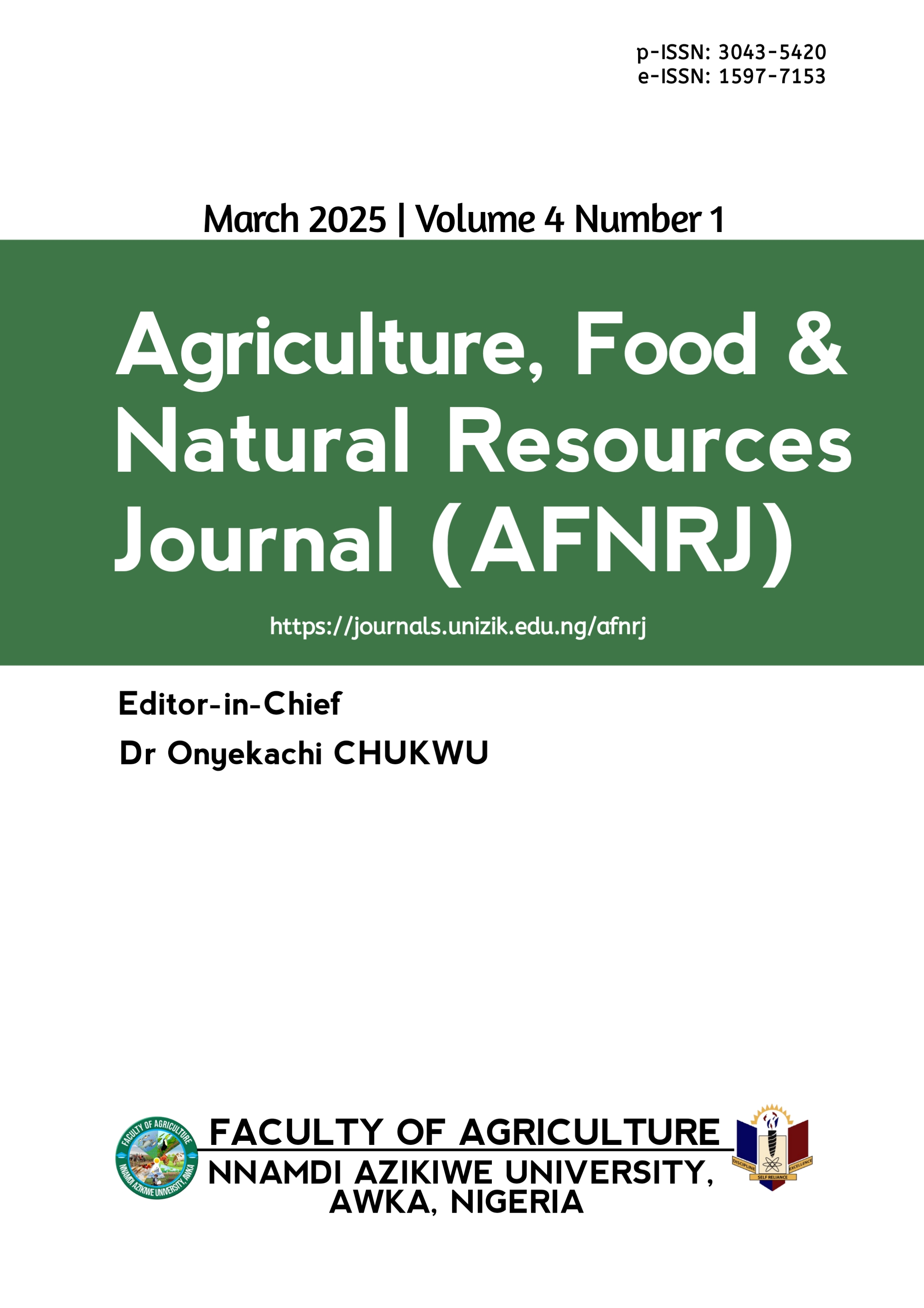Training needs of agro-input dealers in disseminating agricultural information to farmers in Kwara State, Nigeria
DOI:
https://doi.org/10.5281/zenodo.15115372Keywords:
Agricultural information, Agro-dealers, Boric model, Training needsAbstract
This study analyzed the training needs of agro-dealers on agricultural information dissemination in Kwara State, Nigeria. One hundred and eighty-three (183) agro-dealers were randomly selected for the study. Primary data were collected using a questionnaire. Data collected were analysed using descriptive and inferential statistics. The finding showed that the majority (73.2%) of the respondents were male. The average years of experience in agro-input service delivery was 11 years. The leading agro-inputs and advisory services delivered to farmers by agro-input dealers were insecticides (mean=3.98), improved crop seeds (mean=3.86), and herbicides (mean=3.82). Boric model analysis showed that the topmost ranked training on delivering agro-input services to farmers was storage of viable seeds (Mean Weight Discrepancy Score [MWDS]=1.81), use of viable seeds such as maize (MWDS=1.31), and use of simple agro-equipment maintenance skill (MWDS=0.99). Regression analysis results showed that years of experience (β = 0.112), size of trade (β = 0.626), and access to credit (β = 0.978) were significantly related to the training needs of respondents at the 5% level. The study concludes that training is needed in disseminating agricultural information among agro-dealers and thus needs training to improve their skills in disseminating storage of viable seeds, use of viable seeds, and use of simple agro-equipment maintenance. Therefore, the research recommended that relevant government agencies in collaboration with private/non-government organizations should organize training programmes to improve the skills of agro-dealers in the identified areas.
Downloads
Published
Issue
Section
License

This work is licensed under a Creative Commons Attribution 4.0 International License.
which permits unrestricted use, distribution, and reproduction in any medium, provided the original author and source are credited.
Authors retain the copyright of their published work in the AFNRJ.





